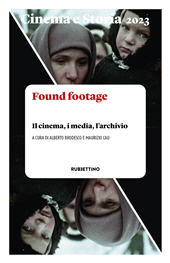Sentire la storia : found footage, archival footage, home movies e il racconto della guerra
P. 77-96
Negli ultimi trent'anni le immagini hanno iniziato, lentamente, ad entrare nel novero dei documenti oggetto della ricerca storica: la quantità del materiale archivistico visivo – fotografico ma anche, sempre più, filmato – cresce esponenzialmente, mentre gli strumenti ermeneutici necessari a interpretarlo sono in ancora in via di definizione. In particolare, i materiali prodotti durante e attorno alla seconda guerra mondiale, già da tempo utilizzati in ambito mediatico, non solo vengono guardati con rinnovata attenzione, ma si stanno arricchendo sempre più grazie all'emersione di documenti amatoriali. Alcuni autori e artisti hanno attraversato questi materiali generando approcci sperimentali: dalle forme auratiche, affettive, quotidiane di Péter Forgács, alla storia in presa diretta di Sergei Loznitsa, fino al cortocircuito tra finzionale e reale di Federico Ferrone e Michele Manzolini. [Testo dell'editore]
Over the last thirty years, images have slowly begun to enter the ranks of historical sources: the amount of visual archival material – photographs but also, increasingly, films – is growing exponentially, while the hermeneutic tools needed to interpret it are still being defined. In particular, the material produced during and around the Second World War, which has long been used by the media, is not only being watched with renewed attention, but it is progressively enriched by retrieved amateur documentation. Some authors and artists are going through these materials, approaching them with a new perspective: from the auratic, emotional, everyday forms of Péter Forgács, to the real-time history of Sergei Loznitsa, to the short-circuit between the fictional and the real by Federico Ferrone and Michele Manzolini. [Publisher's text]
-
Articles from the same issue (available individually)
-
Information
DOI: 10.1400/293607
ISSN: 2283-9852


